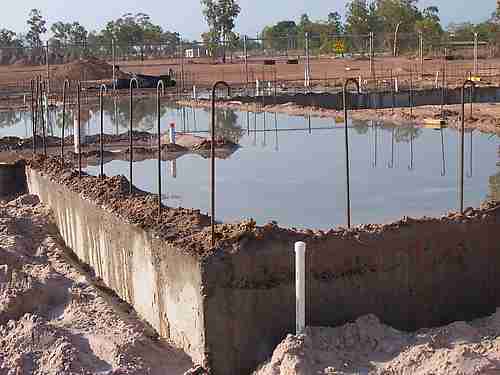
Curing of Concrete – What You Need to Know
As cement comes into contact with water, a chemical reaction known as hydration occurs. It is important to control the amount of moisture loss during cement hydration, as moisture loss will often lead to loss of strength for the finished concrete member. The process of controlling moisture loss within concrete is known as curing.
|
Why is curing of concrete so important? If a concrete member loses moisture content whilst curing, it will be unable to achieve maximum strength. |
|
Methods of curing concrete generally fall into the following categories:
• Minimisation of moisture loss by methods such as the use of a relatively impermeable membrane.
• Minimisation of moisture loss by continuously wetting the exposed surface of the concrete.
• Moistening the surface of the concrete member whilst also increasing its temperature, thereby increasing the rate of strength gain. This method is typically used in commercial construction methods such as pre-cast construction.The selection of the appropriate method or methods for curing will be dependent upon the site conditions, temperature, and other environmental factors. Specific techniques in achieving proper curing of concrete are as follows:
Impermeable-membrane curing
Formwork is an efficient and cost-effective method of curing. In hot weather timber boards should be moistened and plastic sheeting may also be used to cover exposed surfaces.
Plastic sheeting is probably the most common form of concrete curing here in Perth. Their effectiveness is very much reduced if the sheeting is not kept securely into place, and colour selection of the plastic should reflect the temperature at the time of concrete placement. For example, in hot weather white or lightly coloured sheets are preferable, whereas in cooler weather black plastic may be selected.
Membrane-forming curing compounds are another cost-effective method of curing concrete surfaces. However, their effectiveness is very much reliant upon the timing and even distribution of the compound.
Internal curing compounds may also be incorporated into the concrete as an admixture. These compounds have not been extensively tested in residential construction.
Water Curing
Ponding is a method whereby a ‘dam’ or ‘dike’ is erected around the edge of the slab and water is added to create a shallow pond. Ponding is a quick, inexpensive and effective form of curing when there is a ready supply of good ‘dam’ material (e.g. clay soil), a supply of water, and the pond does not interfere with subsequent building operations. When ponding is properly undertaken, the slab has the added advantage of maintain a constant surface temperature, therefore reducing the risk of early age thermal cracking.
Sprinkling or fog curing can be an efficient method of supplying additional moisture for curing, and reduce the temperature of the concrete surface during periods of hot temperature. However, constant supervision is required for this method as environmental conditions such as high winds may prove the system to be ineffective.
Wet coverings such as hessian or materials such as sand can be used like a ‘mulch’ to maintain water on the surface of the concrete. Any coverings must be kept damp at all times to ensure that they do not have the opposite to the desired effect and actually draw moisture from the slab itself.
How will my building inspector assess the effectiveness of the curing of concrete?
Unfortunately it is difficult to accurately assess the effectiveness of concrete curing from a visual only inspection. However, certain defects may be attributable to improper concrete curing, such as early age drying shrinkage. Other factors may have contributed towards early age drying shrinkage cracking and as a result it is best practice to monitor these cracks throughout the building process to ensure that they do not extend in width.
Discolouration of the concrete slab surface may also be an indication of inadequate concrete curing, and as such your building inspection report may act as evidence should it need to be proved in the future that the concrete did not reach the maximum strength desired.
Contact Cap-It-All Building Inspections Perth for a comprehensive pre-purchase building inspection carried out by an experienced and knowledgeable building inspector.

